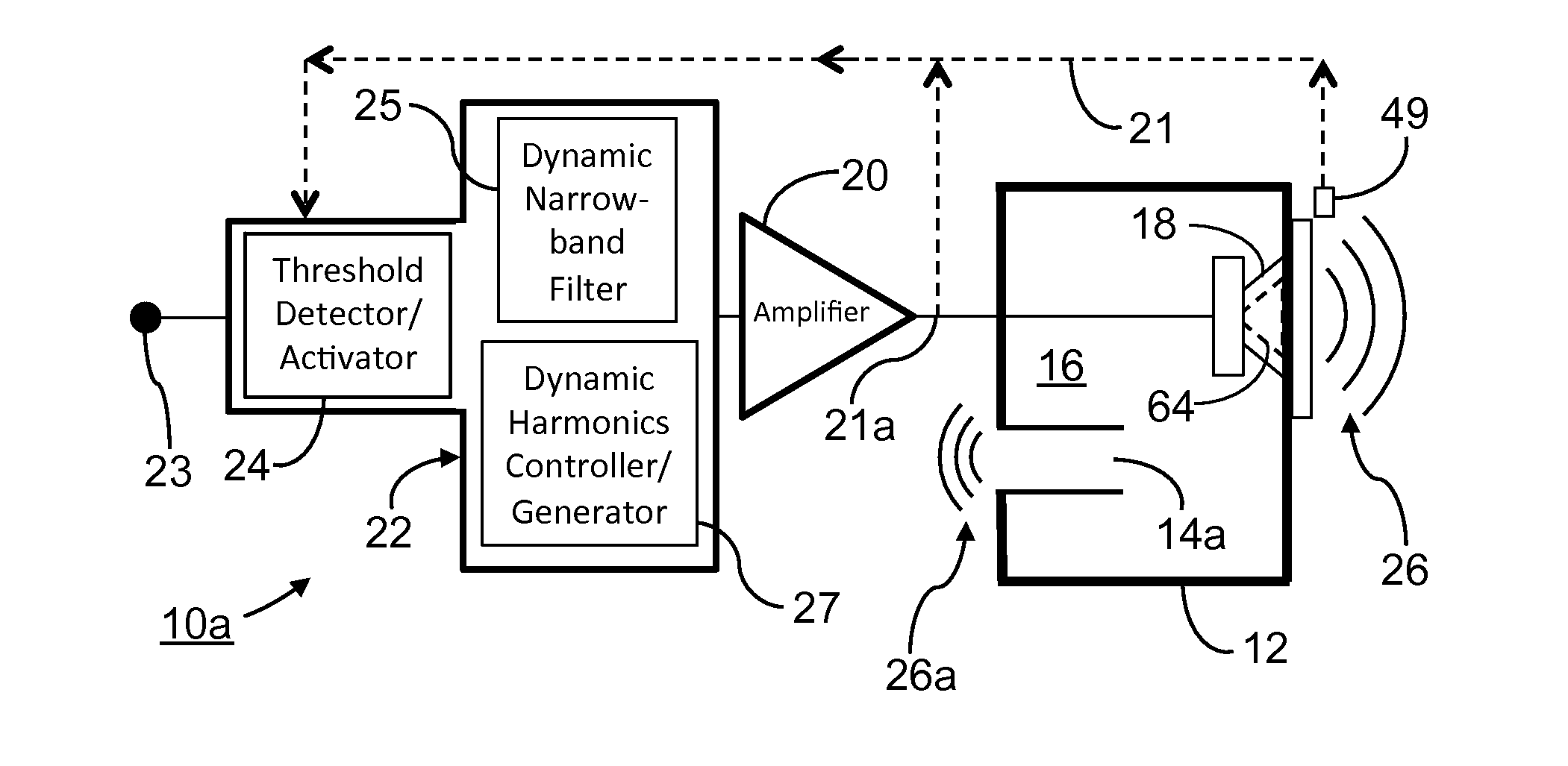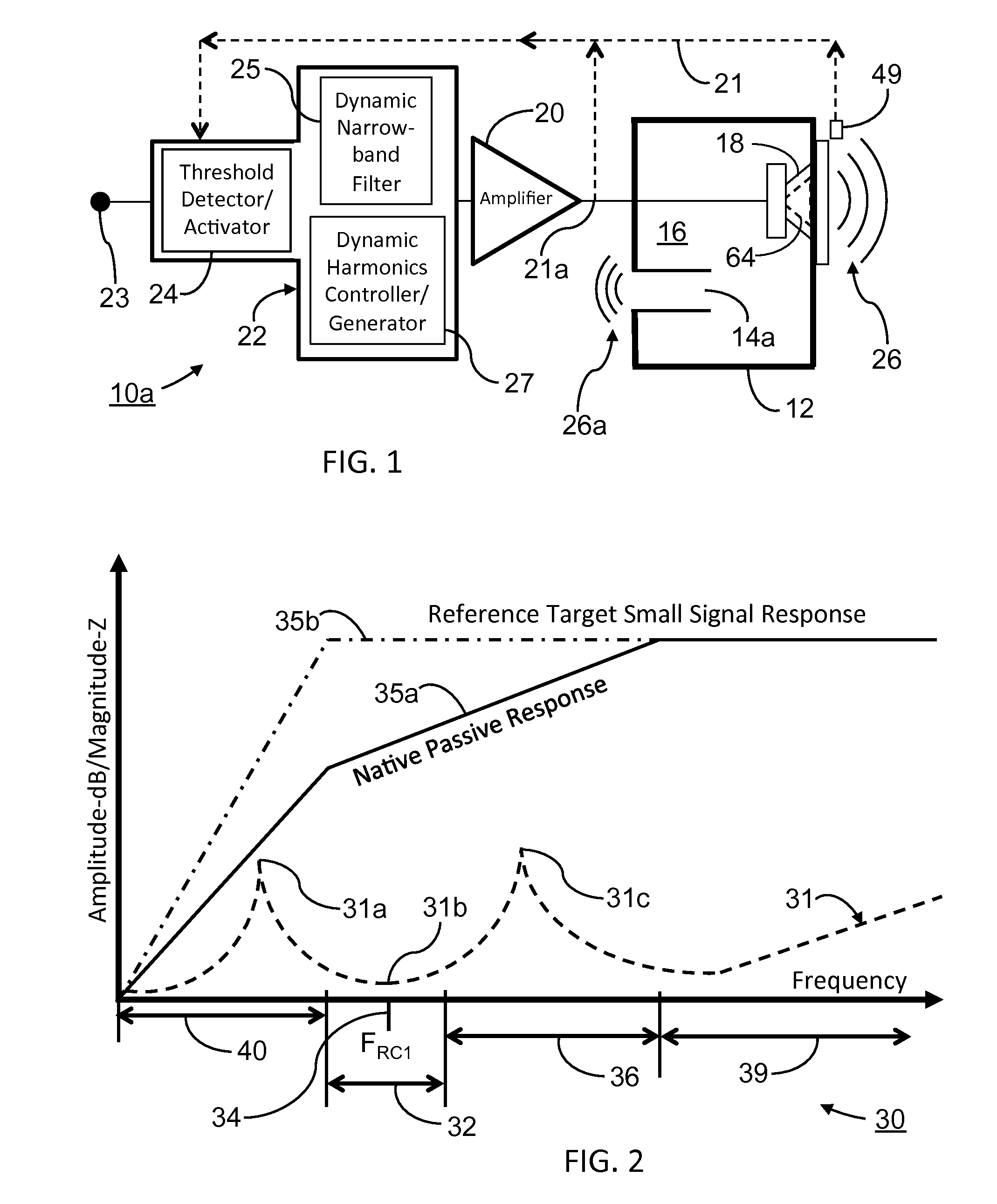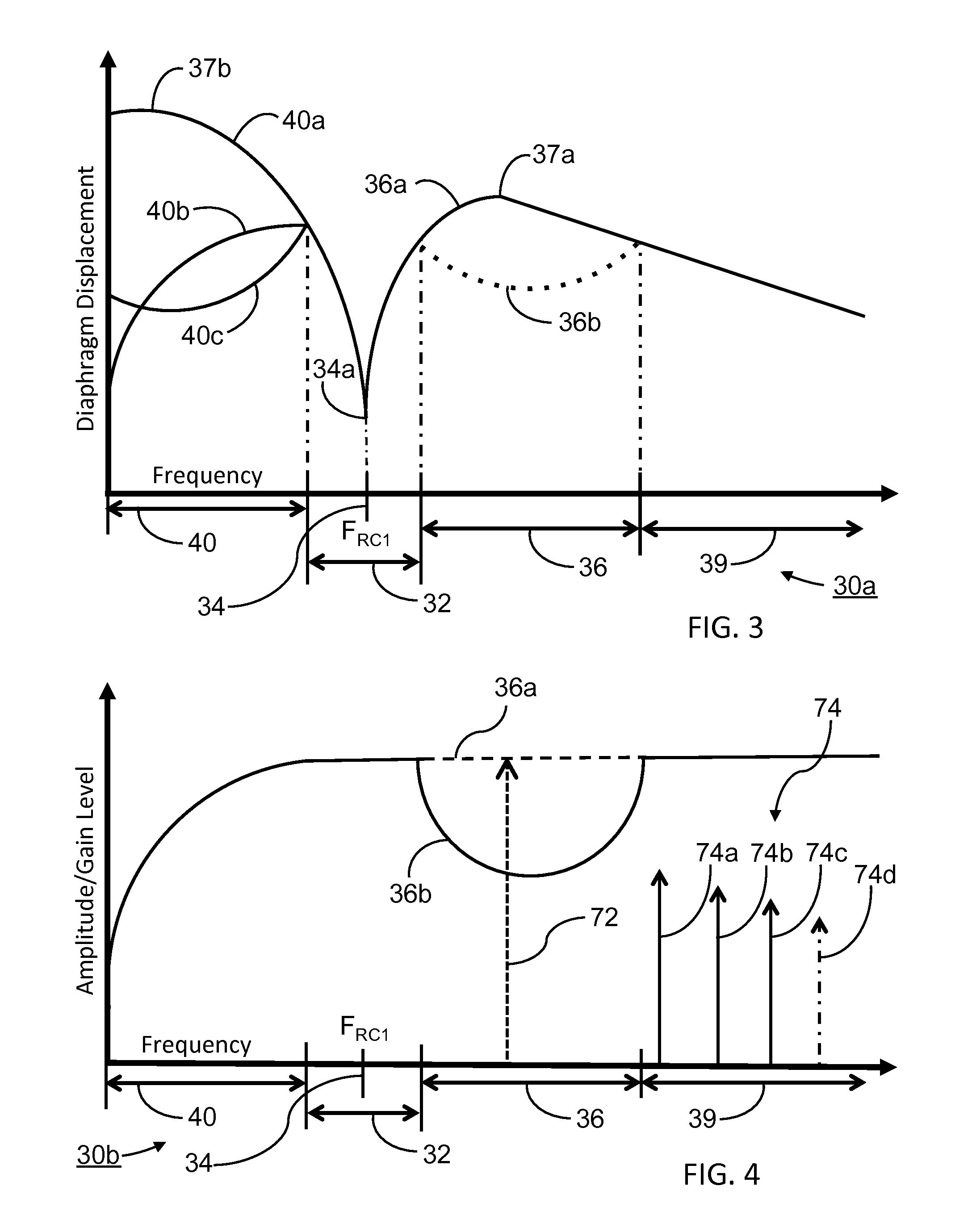Loudspeaker Enclosure System With Signal Processor For Enhanced Perception Of Low Frequency Output
a loudspeaker enclosure and signal processing technology, applied in the field of audio loudspeaker systems, can solve the problems of reducing the physical bass impact and tonal balance quality at large signal levels without, reducing the physical bass impact and tonal balance quality at all but very small signal levels, etc., to achieve the effect of enhancing the low frequency output capability, minimizing loudspeaker overload distortion, and maintaining perceived tonal quality and physical bass quantity
- Summary
- Abstract
- Description
- Claims
- Application Information
AI Technical Summary
Benefits of technology
Problems solved by technology
Method used
Image
Examples
Embodiment Construction
[0063]FIG. 1 represents a first example 10a of the inventive loudspeaker system, including a multi-mode signal processor 22 for minimizing audible overload distortion while increasing perceived low frequency output capability, comprising at least one loudspeaker enclosure 12, including at least one low frequency resonant chamber 16 and at least one electro-acoustical transducer 18, with a vibratile diaphragm 64 for converting an input electrical signal, which may be an input audio electrical signal, received at input 23, and amplified by amplifier 20 to amplifier output / loudspeaker input point 21a, into a corresponding amplified acoustic output signal 26, including a resonant chamber output 26a, with the resonant chamber 16 consisting of at least one of a bass-reflex resonant chamber and a wave-resonant air-column chamber, with the example loudspeaker system of FIG. 1 showing a bass reflex enclosure 12 with resonant chamber 16. The acoustic mass of the passive acoustic radiator 14a,...
PUM
 Login to View More
Login to View More Abstract
Description
Claims
Application Information
 Login to View More
Login to View More - R&D
- Intellectual Property
- Life Sciences
- Materials
- Tech Scout
- Unparalleled Data Quality
- Higher Quality Content
- 60% Fewer Hallucinations
Browse by: Latest US Patents, China's latest patents, Technical Efficacy Thesaurus, Application Domain, Technology Topic, Popular Technical Reports.
© 2025 PatSnap. All rights reserved.Legal|Privacy policy|Modern Slavery Act Transparency Statement|Sitemap|About US| Contact US: help@patsnap.com



